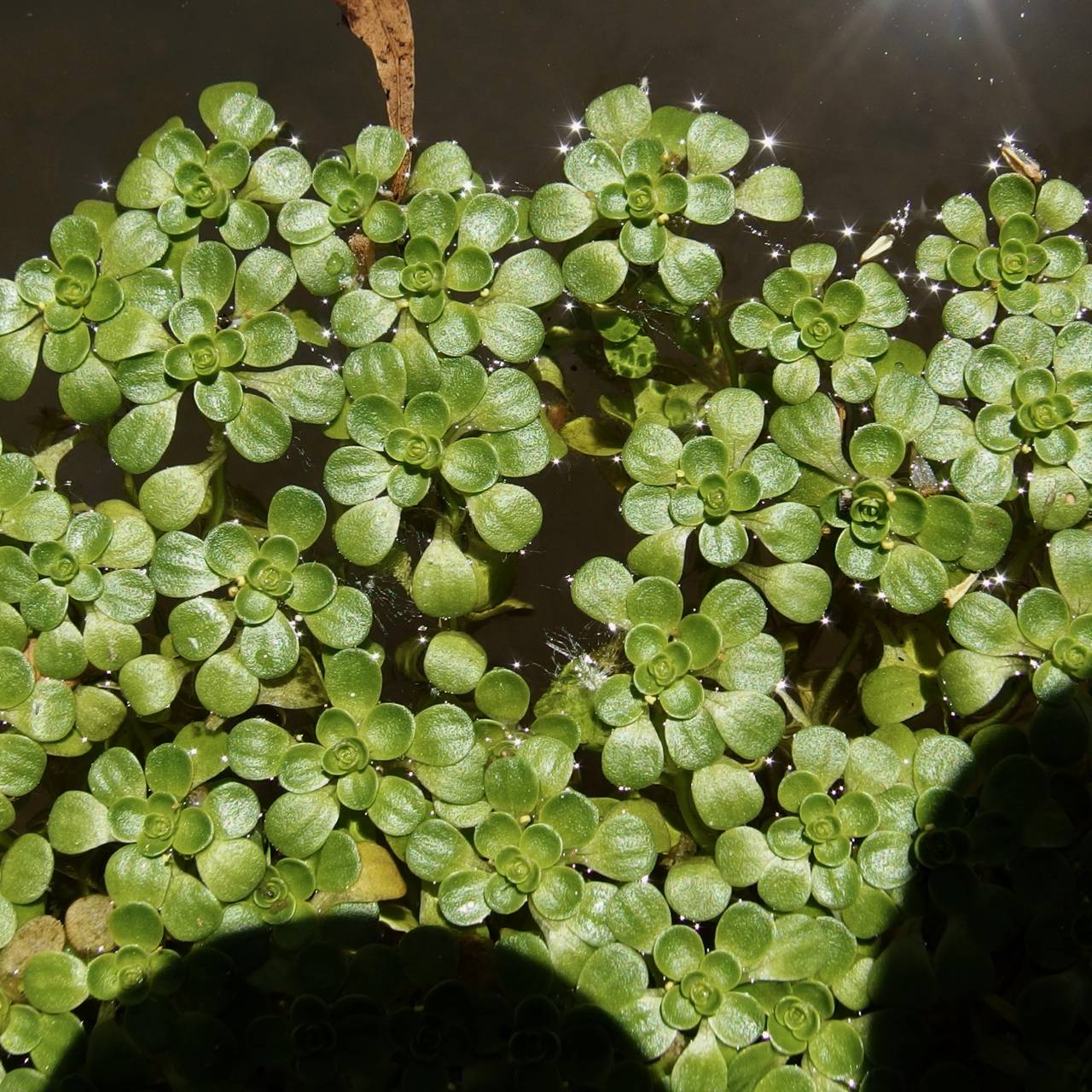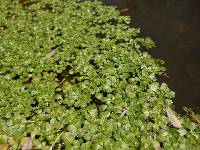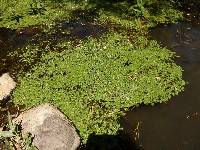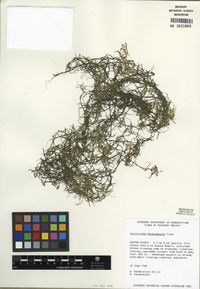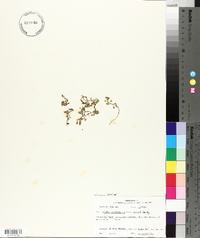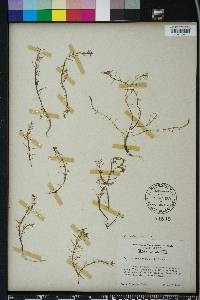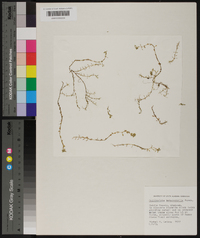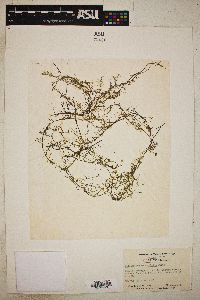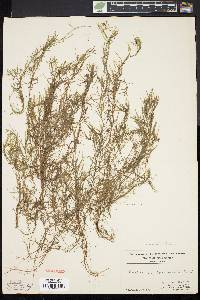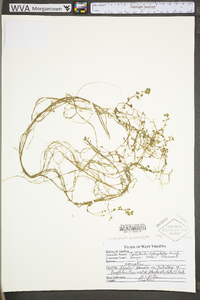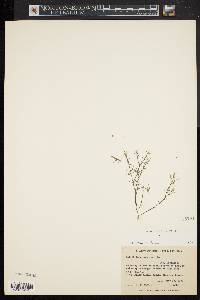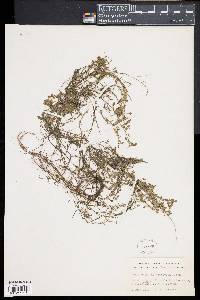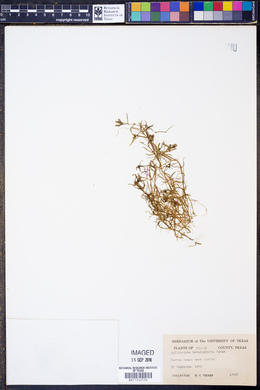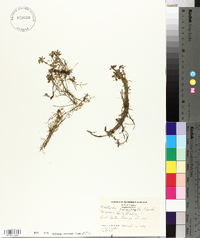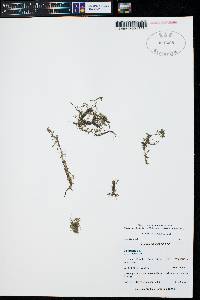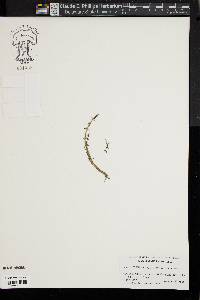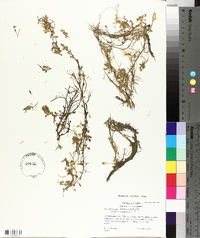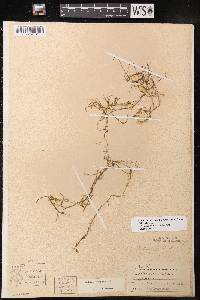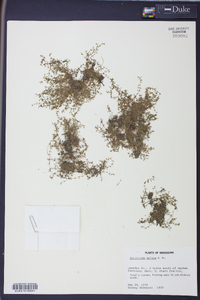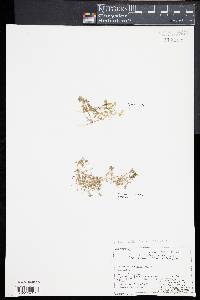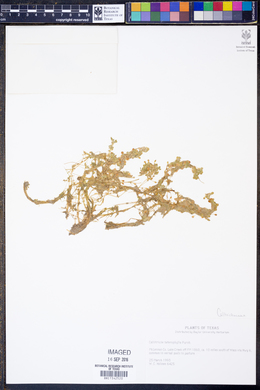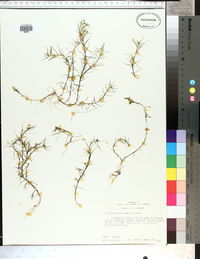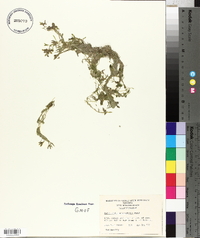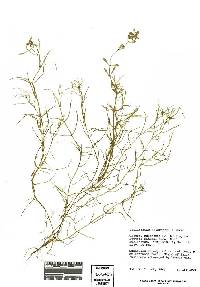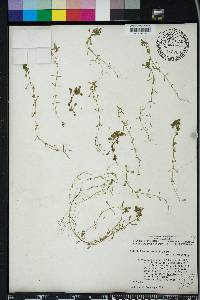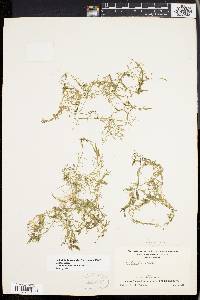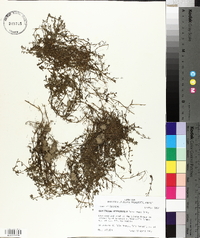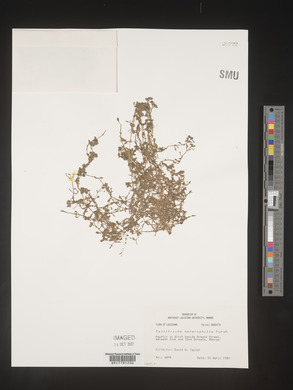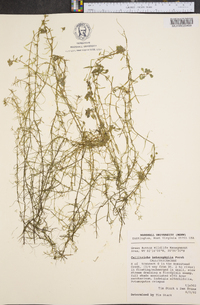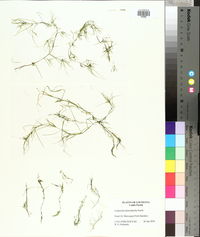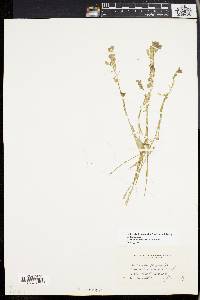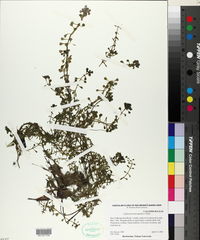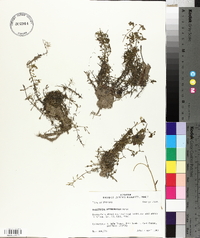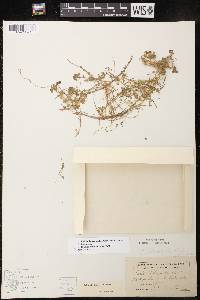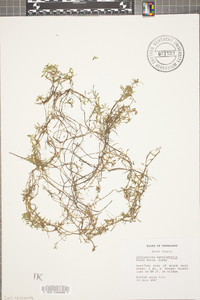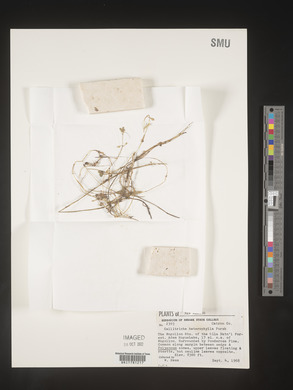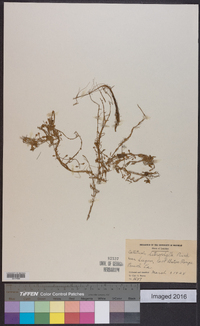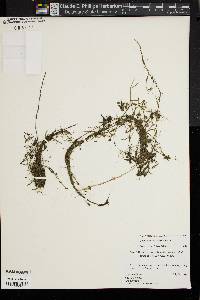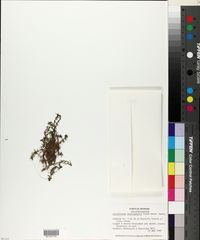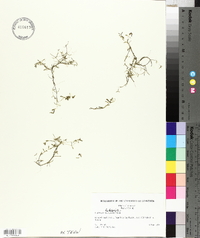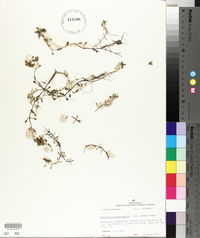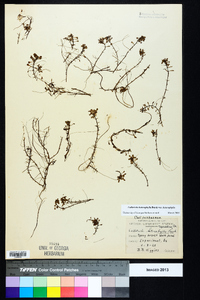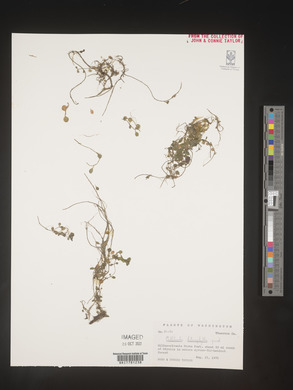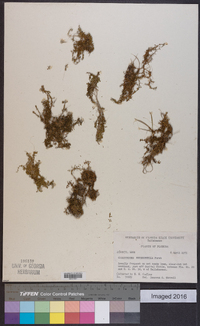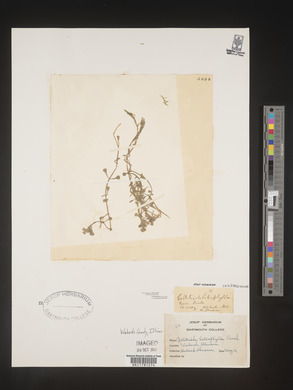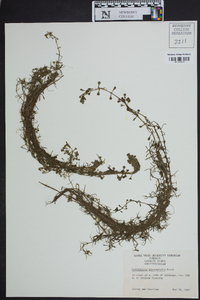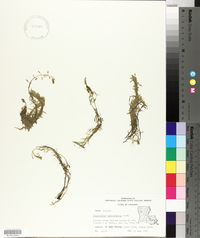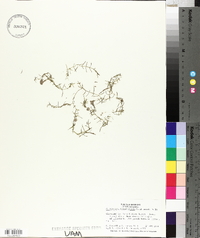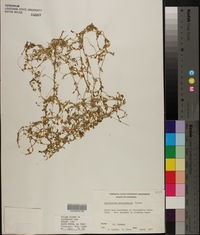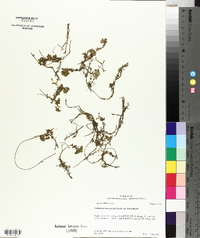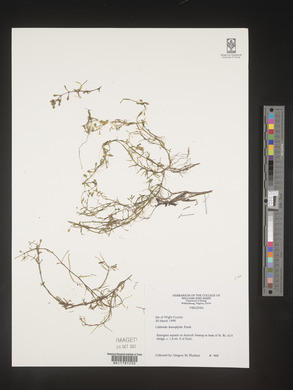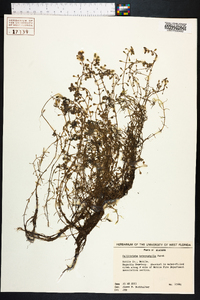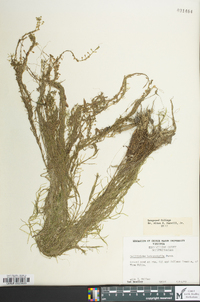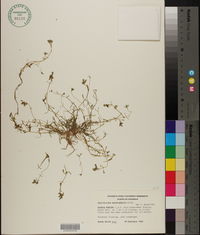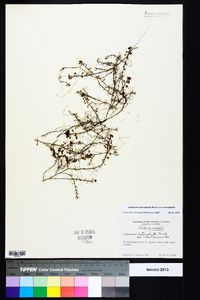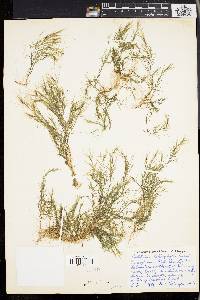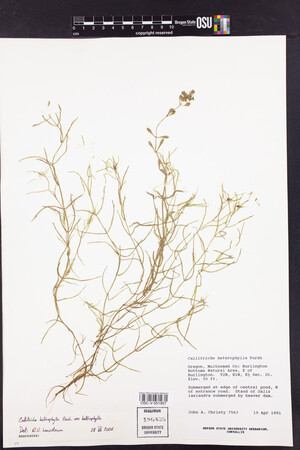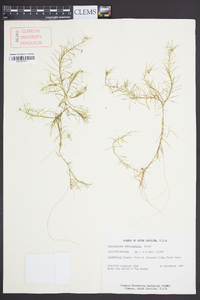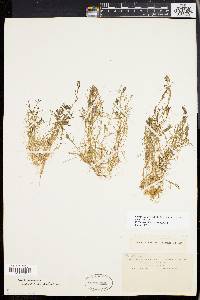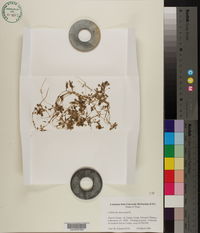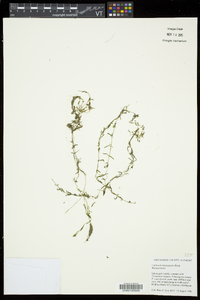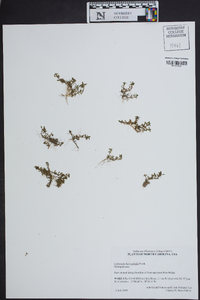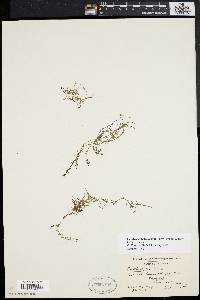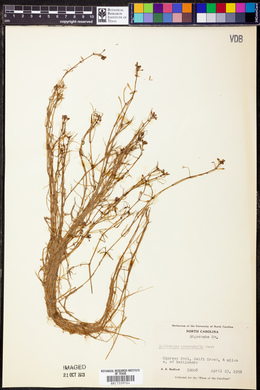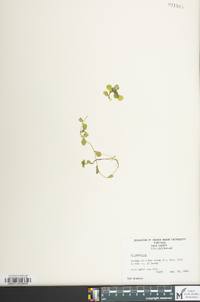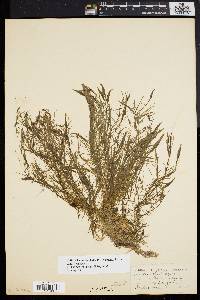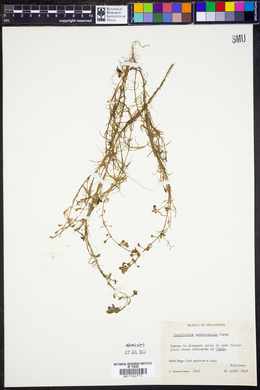Callitriche heterophylla
|
|
|
|
Family: Plantaginaceae
Greater Water-Starwort, more...twoheaded water-starwort, differentleaf waterstarwort, greater water starwort, larger waterstarwort, variedleaf waterstarwort
|
Plant: annual, mostly submerged aquatic or terrestrial herb Leaves: polymorphic; submerged leaves linear, 1-15 mm long, 0.5-1.0 mm wide, the margins entire, the apices bifid or emarginate with the single nerve often extending to a callous point, the bases clasping the stem, the basal pairs usually separated but connected by a ridge or wing at the node, or less often adjoining; floating or terrestrial leaves petioled, 3-nerved, obovate to oblanceolate to spatulate, 1-15 mm long, 1-5 mm wide, the apices rounded to slightly retuse, the bases as above, the surface covered with minute scales and appearing punctate INFLORESCENCE: with usually single staminate and pistillate flowers in each axil Flowers: subtended by a pair of whitish inflated bracteoles, 0.5-1.5 mm long, usually deciduous in fruit; styles 1-6 mm long, erect or spreading, often persistent Fruit: nutlets, brown at maturity, sessile, 0.5-1.3 mm long, 0.6-1.1 mm wide, broadly-obovate, usually deeply notched between the carpels, overall appearing cordate, the margins wingless (immature material may appear wing-like when the seed fails to fill the mericarp, the unexpanded margin appears thin and wing-like, but pitted like the surface of the mericarp), rounded, the groove between carpels very shallow or inconspicuous, not at all sharp-edged; surface pitted, but the pits not obviously aligned in vertical rows Misc: Lakes, ponds and slow-moving streams; 900-2750 m (3000-9000 ft); Feb-Aug (fr. May-Oct) REFERENCES: Ricketson, Jon. 1995. Callitrichaceae. J. Ariz. - Nev. Acad. Sci. 29(l): 15. Annual submersed aquatic herb 10 - 20 cm tall Stem: slender, highly branched, loosely clustered, often with floating shoot tips. Leaves: of two types, submersed and floating. Submersed leaves are opposite, 1 - 2 cm long, linear and non-toothed. Floating leaves (if present) opposite or forming a terminal rosette, 0.5 - 1.5 cm long, spoon-shaped (spatulate), non-toothed. Flowers: either male or female, found on the same plant (monoecious), green, tiny, lacking sepals and petals, with stigmas twice as long as the fruit. Fruit: separating into four dry nutlets at maturity, stalkless, less than 1 mm long, as wide as long, often inversely egg-shaped with a rounded base, lacking wings, dotted with tiny pits but not in distinct rows. Similar species: Callitriche heterophylla and Callitriche verna are very similar species that are most easily distinguished by their fruit. Callitriche verna has fruit that is 1 - 1.4 mm long and about 0.2 mm longer than wide, narrowed at the base, distinctly winged and grooved, and dotted with tiny pits in distinct vertical rows. Flowering: mid May to late August Habitat and ecology: This species is uncommon in the Chicago Region, but can be found in quiet waters of shallow streams, ponds and wet depressions. Occurence in the Chicago region: native Notes: This species provides food and shelter for aquatic insects and fish. The seeds and leaves are eaten by ducks. Etymology: Callitriche comes from the Greek words, kalli, meaning beautiful, and thrix, meaning hair, referring to the slender stems. Heterophylla comes fom the Latin words meaning "differently leaved." Author: The Morton Arboretum Martin and Hutchins 1980 Duration: Annual Nativity: Native Lifeform: Forb/Herb General: Slender stemmed annual aquatic plant, sometimes growing in mud, the stems compressed-filiform to 25 cm long, can elongate to much longer lengths in deep water, usually rosette. Leaves: Emersed fan shaped leaves, obtuse to truncate at apex, 3-5 nerved, 5-25 mm long, floating and emersed leaves broadly obovate to ellliptic, 1.5-5 mm wide, submersed leaves linear, 1-nerved, shallowly emarginate at apex. Flowers: Solitary and axillary, perfect or unisexual, perianth absent but flower subtended by pair of bracts, 1 elongated stamen with a cordate anther, superior ovary sessile or peduncled, 4 carpels. Fruits: Fruit an orbicular compressed, 4-lobed, 0.5-1 mm long and wide, wingless or winged apically. Ecology: Found in slow moving or still water from 3,000-10,000 ft (914-3048 m); flowers May-September. Notes: Essentially undistinguishable from C. palustris in the field. Ethnobotany: Unknown Etymology: Callitriche comes from Greek kallos, beautiful, and trichos, hair, while heterophylla means different leaves. Synonyms: None Editor: SBuckley, 2010 Much like no. 3 [Callitriche palustris L.], differing mainly in the frs, these ca 1 mm or a little less, nearly to fully as long as wide (not more than 0.1 mm longer than wide), often but not always a little wider above the middle than below, the margins rounded or obtuse or very shallowly and inconspicuously grooved between the carpels, not at all sharp-edged or winged; pit-like markings on the surface of the fr not obviously aligned in vertical rows. In quiet water throughout most of N. Amer., and also in S. Amer. (C. anceps Fernald, the rare, mainly boreal, wholly submersed phase) Gleason, Henry A. & Cronquist, Arthur J. 1991. Manual of vascular plants of northeastern United States and adjacent Canada. lxxv + 910 pp. ©The New York Botanical Garden. All rights reserved. Used by permission. |
|
|
|

